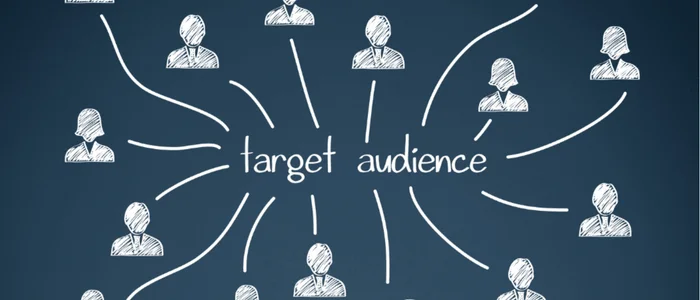

Psychology has always played a part in online communities, providing a sense of belonging, helping to fight loneliness, and allowing individuals from all over the world to connect. One in three people experience loneliness in the US, and social media communities have the power to alleviate those feelings, with 66% of people choosing to join online spaces as a way to make connections.
By understanding and harnessing the power of psychology, businesses, brands, and influencers can build thriving and successful social media communities. Tapping into audience desires, thoughts, and behaviors will help community managers create content designed specifically for specific groups. Here’s how.

According to the Cambridge Dictionary, Psychology is the scientific study of how the human mind works and how it influences an individual’s behavior. Understanding the psychology of your audience is crucial to building a successful online community. Identifying and researching your audience will help you create a content strategy that will successfully engage your followers.
Identifying your audience is essential to build a community on social media, whether that’s a Twitter (X), TikTok, YouTube, or Instagram community.
Identifying your target audience will help you tailor your tone, content, and engagement strategies to connect with your audience. For example, a fitness coaching community that centers around yoga, mindfulness, and meditation will need different language and content than a digital marketing company focusing on SEO. Using the same type of language and content for both target audiences will be detrimental to building a community.
Your content strategy should also adhere to your purpose. For example, is your goal to motivate, inform, or educate your audience? Answering this question will help you define your language style and content strategy.
To identify your target audience, consider the various segments they might fall into. Here are some to consider:
Focusing on a niche topic will help you build a successful social media community. It’s better to choose one group rather than trying to appeal to everyone, as you’ll be able to build a community that’s more engaged and loyal.
The #1 to make money online with TikTok Search (FREE TRAINING)

To build a strong social media community using psychology, it’s important to research your audience.
There are a range of methods community managers can use to collect important data about their audience. These include:
To build a successful community, it’s important to monitor social media channels. Collect data on your competitors and their strategies, industry trends, and even your own brand. Be aware of any positive and negative comments social media users may make about you.
Keeping a close eye on your competitors will help you find and use strategies to help your online community grow. Examine your competitors’ social media, whether that’s Instagram, TikTok, or Facebook. We’ve already mentioned taking their ideas, but it’s also important to identify gaps in their content. What are they missing? What would benefit their, and your, audience the most?
Creating audience personas will help you understand your audience better, especially if you’re building your community from scratch.
Audience personas are fictional characters designed based on your target audience demographics. They’re essential for helping businesses and communities create effective content strategies that their audience will relate to.
An audience persona should include information such as:
Here’s a step-by-step guide for creating a detailed audience persona:

There are a range of psychological principles that drive social media engagement. Understanding them will help you see why specific people are more likely to engage with specific social communities.
Placing yourself as an authoritative voice in your niche can help grow your community. Individuals are more likely to follow and trust other people, companies, and groups that can demonstrate their expertise in a particular area.
To become an authority, ensure to share your experience with your audience. For example, if you have a degree or a specific qualification, make sure it’s easy to see on your website or social media bio.
Only use high-quality and well-researched content that is free from mistakes, as this will help build trust. You could also partner with well-known, authoritative figures and industry experts, as this will encourage your audience to trust you.
Reciprocity refers to the principle where people feel compelled to return a favor. Communities and companies can harness this by providing high-quality value to their audience. This, in turn, encourages them to engage with the content.
Here are some examples of free resources you could provide:
You could also run contests and giveaways where followers can be in with the chance of winning something valuable. This approach is particularly prevalent in art communities, where free supplies and paints are often given.
Engage with your followers regularly by personally responding to comments and messages. This will show them that you’re a community leader who cares.
Social proof is where people mimic the actions of others. For example, if individuals see others interacting with your content or products, they will likely do the same.
You can use this psychological phenomenon to your advantage by:
All of the above strategies can act as powerful social proof, helping to attract new followers.
Belonging is important for building any community. People seek social media in general because they want to belong to part of a group. Building a welcoming and inclusive space will satisfy this need, draw in new members, and promote brand loyalty.
Here are some tips to make your community members feel like they belong:
Security is where individuals feel motivated to act quickly due to a sense of urgency. This could come in the form of:

To build a thriving community, it’s important to work on building engagement, as this will cultivate an active and loyal audience that will keep coming back for more.
If you want your followers to trust you, it’s important to master authenticity. This means being genuine and honest when you interact with community members. This approach builds trust and helps you form a deeper connection with your audience.
To be authentic, you could:
This will humanize your brand and, once again, build trust with your audience. Many millionaire community managers use this approach, such as Ali Abdaal, who owns Productivity Lab. He has always been honest and transparent about how he became successful, inspiring others to use his methods, too.
Responding properly to comments and feedback will help you build a community where your members know you care.
Responding quickly to comments left on your posts, or even direct messages, will show your audience that you want to engage with them and value their input, whether they’re sharing supportive messages or offering feedback. Setting aside a specific block of time each day to reply to comments and messages will ensure you’re actively engaging with your audience and building your community.
Taking the time to think up meaningful responses will demonstrate your authenticity and humanize your brand, showing followers that you’re genuinely interested in what they have to say. Ensure that you tailor your answer to specific questions, address concerns, or reply to compliments. Don’t use one generic response for everyone.
Negative feedback can be disheartening, but handling it successfully will help you build your brand. This is done by addressing negative comments in a professional manner and taking onboard feedback. Even if you don’t agree, this will show your followers that you value their feedback and are committed to improving your community space.
Always acknowledge your feedback at the very least, apologize if needed, and offer a solution to problems. This will show the audience that you want to build a community that works for them.
Community events are a sure way to bring your community together and attract new members. There are a range of different event types you can try.
These events bridge the gap between the online and real world, providing a chance for community members to interact with each other in real-time. Virtual events can provide entertainment, educate your members, build bonds, or all three. They’re a great way to break the ice and encourage engagement. Examples include:
For more examples of virtual events, check out this article.
Encourage user participation and engagement through contests and challenges. These events offer incentives for your followers to get involved. It’s important to pick a contest and prize related to your niche. Include contest rules that will encourage engagement, such as posting photos, completing tasks, commenting on posts, or sharing personal stories.
Collaborative projects are a fantastic way to bring your community together, help them form bonds, and even create lifelong friendships. You can organize projects such as community art and co-created content.
Highlighting the contributions of community members will improve engagement and build a social media community where everyone feels valued.
Spotlighting community members and showing their contributions will make them feel valued. This not only encourages them to participate more but also invites other followers to get involved, too.
To do this, you could share stories and achievements from your followers, as well as member testimonials once a month.
UGCs (user-generated content) are a great way to provide valuable content, make existing members feel valued, and encourage others to participate. This includes sharing photos, videos, and posts created by community members on your platform.
One example is book and TV communities using “Fan Art Friday” to showcase community members’ work.
Rewarding community members will make them feel valued and help nurture community motivation. Offer rewards such as shoutouts and prizes, or even implement recognition programs, such as “Member of the Month.”
The #1 to make money online with TikTok Search (FREE TRAINING)

Even with everything else in place, you won’t be able to build a sustainable social media community without an effective and well-thought-out content strategy. It’s important to curate and use a strategy specifically designed to capture and sustain the attention of your target audience.
There is a whole world of different content types you can harness to engage your audience, bring in new followers, and build your community.
Consistency is key to building a community on social media, especially with the changing algorithms.
A content calendar will help you create a schedule for posting, ensuring you remain consistent and don’t get caught by content droughts. Planning a few months ahead can help with this.
Many social media platforms, such as Instagram, now allow users to schedule posts ahead of time. Several third-party apps, such as Loomly, Sprout Social, and CoSchedule, can also help with this.
Theming your content will help provide structure to your posts. Create weekly or monthly themes to focus on specific topics. For example, book communities could dedicate a month to Thriller and Crime novels, or health communities could spend a week sharing wellness tips. This consistency will help you build a thriving community.
Incorporating seasonal and timely content will help you capitalize on current trends and stay relevant, which is important to building a successful community. Plan content around holidays (such as Christmas, Easter, or Valentine’s Day), events, and trending topics related to your niche. This will keep your community current and your audience engaged.

To build a successful community on social media, it’s important to monitor its progress and adapt your strategies accordingly to enhance engagement and encourage growth. Even small improvements can make a big difference.
Analytics are essential for tracking social media performance and monitoring the health of your community. They can provide essential insights into what content is resonating and identify areas for improvement.
Analytics tools will help you monitor the health of your community. The following tools can provide you with detailed metics on reach, engagement and audience demographics.
There are specific metrics every online community should be tracking to help them grow. These include:

Gathering regular feedback from your community will help improve it. Good audience feedback will help you understand your followers’ desires, preferences, and pain points, and you can then use this information to update your content strategy.
There are a range of methods you can use to collect audience feedback. These include:
Once you’ve collected your feedback, it’s time to acknowledge it and incorporate it into your social media strategy. For example, if a common theme in your feedback is that your community wants more video content, ensure to address that and film more videos. If followers can see you making visible changes based on their suggestions, this will make them feel valued as community members, and more likely to engage.
Although social media is a fantastic way to find new followers and expand your reach, the changing algorithms can make growing a community difficult. If you want to grow a sustainable community that you can monetize, consider Teach.io. This platform has everything you need in one place, including support for various content types, a course builder, a built-in calendar, custom notifications, and a space for live events.
Psychology is a powerful tool for ethically building a thriving social media community. By using the principles and strategies above, you can harness the power of psychology to better understand your audience’s desires and behaviors, helping you create community content that appeals directly to them.





